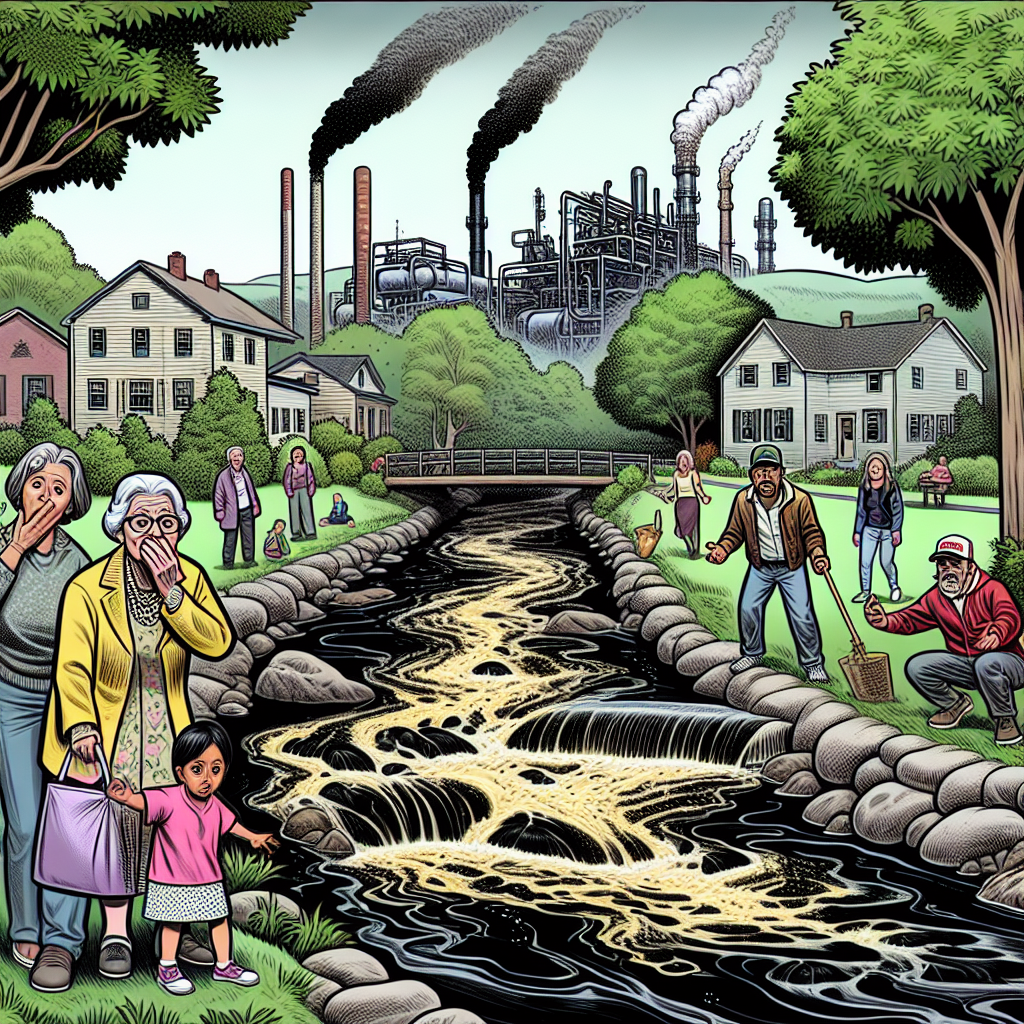Silent Poison: Chesterburgh’s Battle to Save Maple Grove Creek

Last Monday morning, the peaceful streets of Chesterburgh were unsettled by an ominous discovery near Maple Grove Park, a longtime gathering spot for neighborhood picnics and evening strolls. What started as an ordinary week in our quiet town swiftly turned into a scene thick with worry when local residents reported a persistent foul odor and noticed unusual discoloration along the banks of the creek that threads through the park.
On Tuesday, I walked down to the edge of the water, the early spring air still chilly and scenting faintly of damp earth and budding lilacs. The creek, usually clear and humming with covert life, bore a strange sheen of iridescent glimmer on its surface. Below it lay bits of dark, oily residue—a stark contrast against the water's gentle flow and the budding green that edged the banks.
Chesterburgh is no stranger to seasons of change, but it is a hard thing to witness the subtle web of the local ecosystem disrupted. Longtime resident and retired schoolteacher, Elsie Montgomery, who has lived two blocks from the park for over four decades, shared her concern with more than a trace of sorrow. “I’ve watched children wade here, played catch and tossed sticks for dogs for years," she said, her eyes cast down toward the water. “To think this place could be poisoned—it breaks something deep inside.”
The community’s alarm grew when the Chesterburgh Environmental Coalition (CEC) confirmed that samples taken from the creek tested positive for elevated levels of industrial solvents and hydrocarbons. These chemicals, often used in manufacturing and known for their persistent toxicity, suggest a spill or illegal dumping upstream. The immediate cause remains unclear, but local authorities have mobilized to investigate the source with urgency.
As the days passed, the distressing news spread through town with a growing sense of urgency—not only for the environmental impact but also the human health risks tied to exposure. Maple Grove Park is frequented by young families, elderly walkers, and weekend fishermen who depend on this spot for respite and connection. The potential for contaminated water to seep into private wells, or for airborne toxins to travel on the spring breeze, has many residents on edge.
Chesterburgh’s public health nurse, Mara Singh, appeared at the recent community meeting held in the town hall to address these fears. “We are advising everyone to avoid contact with the creek water and to carefully monitor any symptoms such as headaches, dizziness, or skin irritation," she urged, her voice steady but marked by concern. “We are working with environmental and health agencies to provide testing and support.”
Perhaps most poignant was the testimony from Jon Ramirez, a local fisherman whose family has harvested fish from the creek for generations. I met Jon at the docks by the old mill, where a quiet wind played through rusting chains and salt-tinged wood. His hands, weathered and steady, rested against a bucket now curiously empty. “This creek fed us," he said softly. “Not just with fish, but with memories, with stories. My grandfather taught me how to read the water, the currents. Now all that's at risk.”
The sudden environmental jeopardy has also reignited a conversation long simmering beneath Chesterburgh’s surface: how to safeguard our small town’s natural wealth amid the creeping shadow of industrial expansion beyond our borders. In recent years, several factories have sprung up near the outskirts of town, bringing jobs but also fears of pollution. This incident feels, to many, like a painful tipping point.
Mayor Lyle Thompson addressed the community on Wednesday evening, expressing the town’s commitment to transparency and swift action. “We are working closely with state environmental agencies to identify the cause and hold those responsible accountable," he said. “Chesterburgh’s wellbeing, its water, and its people are not n
